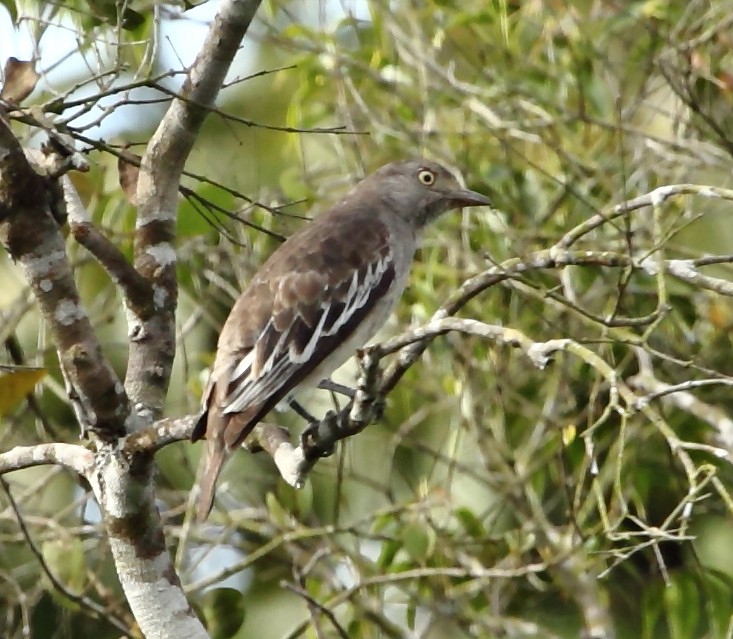Pompadour Cotinga
A species of White-winged Cotingas Scientific name : Xipholena punicea Genus : White-winged Cotingas
Pompadour Cotinga, A species of White-winged Cotingas
Botanical name: Xipholena punicea
Genus: White-winged Cotingas
Content
Description General Info
 Photo By Hector Bottai , used under CC-BY-SA-4.0 /Cropped and compressed from original
Photo By Hector Bottai , used under CC-BY-SA-4.0 /Cropped and compressed from original Description
Individuals of the Xipholena punicea are sexually dimorphic, with males displaying bright, complex colorization and females appearing more pale and grey. Males of this species have yellow eyes, stark white primary coverts with black wing tips, and a glossy, wine-red head and body. The distinguished burgundy color of the male individuals was previously thought to be a combination of "blue structural color and red carotenoid," but recent experimentation has shown that this species of Cotingidae does not utilize structural coloration. This distinct colorization consists of pigments from eight different carotenoids, six of which are unique to the Xipholena punicea species itself. These six pigments were found to be "ring-substituted, methoxy carotenoids" and were likely formed through chemical reactions of other dietary carotenoids. These species-specific carotenoids are significant in the study of Xipholena punicea because other species of birds are not known to use the same pathways for carotenoid construction that are used by the pompadour cotinga. Additionally, the complexity of the creation of these pigments allows for an added diversity in the carotenoid products themselves and further distinguishes X. punicea from other members of the genus. Both male and female pompadour cotinga have a "short beak and wide gape". This trait is shared by other members of the family Cotingidae and is indicative of a frugivorous diet. Eggs of this species are not well documented, but have been described as bluish-grey and blotched. In addition, chicks undergo a change from white to a blotched-grey color, possibly serving as a form of camouflage in the nest. 
Size
20 cm
Nest Placement
Tree
Feeding Habits
Pompadour Cotinga, primarily frugivorous, occasionally consume insects, supplementing their diet opportunistically with larger prey, especially during breeding. They forage in groups, communicating with distinctive calls, and show unique behavior when feeding on meat, such as subduing larger prey before ingestion.
Habitat
The pompadour Cotinga is found predominantly in the canopy of humid evergreen lowland forests, particularly terra firme and forests on white sandy soils such as campinarana and varillal. Its range extends to seasonally flooded black-water forests, or igapó, in certain areas. Generally residing below 500 meters elevation, the pompadour Cotinga may occasionally inhabit regions as high as 1,300 meters in some parts of its territory. The habitat preference includes thick vegetation and acidic soil due to decomposing plant material, and the species is primarily distributed across broad regions of tropical South America.
Dite type
Frugivorous
General Info
Feeding Habits
Bird food type

Fruit
Distribution Area
Members of the X. punicea occupy the canopy layer of rainforests across South America, including regions in Brazil, Colombia, Venezuela, and the Guianas. In the Northern Peruvian Amazon, they live in the varillal (white sand forest) regions and forage in groups in the Caraipa tereticaulis trees along the Nanay River. Pompadour cotingas generally live in areas of thick vegetation and white, sandy soil which has been darkened and acidified by the decomposition of vegetative material. There have also been rare sightings of possible vagrants in Bolivia and eastern Ecuador outside of their established range. 
Species Status
Not globally threatened.
Scientific Classification
Phylum
Chordates Class
Birds Order
Perching birds Family
Cotingas Genus
White-winged Cotingas Species
Pompadour Cotinga